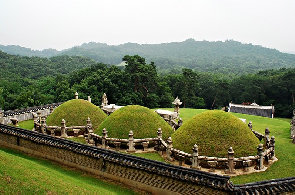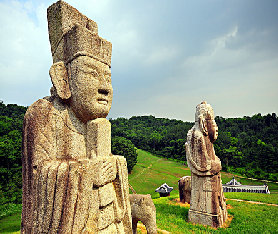Donggureung Tomb - UNESCO World Heritage Site Since January 2006
Donggureung Tomb in South Korea is a cluster tombs representing the best sample of royal family group tombs from the Joseon Dynasty. Seven kings and then queens are buried here in nine Neung-type tombs.
The Royal Tombs of the Joseon Dynasty refers to a group of tombs for the Joseon royalty which have been acknowledged by the South Korean government as a tentative UNESCO World Heritage site since 2006.

Donggureung Tomb is located in a large forest area.
There are nine royal mausoleums and seventeen graves in total. This cluster of tombs occupies a large area compared to other tombs in Korea. The surrounding forest enhances the serene charm of the place.
The nine royal mausoleums included the tomb of King Taejo, the founder of the Joseon Dynasty and reigned from 1335 to 1408.
The tomb which is called Geonwonneung Tomb also hold the remains of his wives Queen Hyohyeon and Queen Hyujeong. This cluster of tombs represents beautifully the evolution of Joseon-style tomb architecture over a period of five hundreds years.

Joseon era royal tombs followed the guidelines outlined in Chinese Confucian texts like the Book of Rites and the Rites of Zhou.
Many factors have to be considered when deciding the location of a tomb like the distance from Hanyang, the distance in relation to other royal tombs, the accessibility of the location and Korean traditions of geomancy or 'feng-shui'.
The tomb construction also took into consideration traditional burial rituals of Korea and the natural environment. Thick forests cover the mausoleums and there are trail walks between the graves.
Donggureung Tomb Back to Historic Sites





